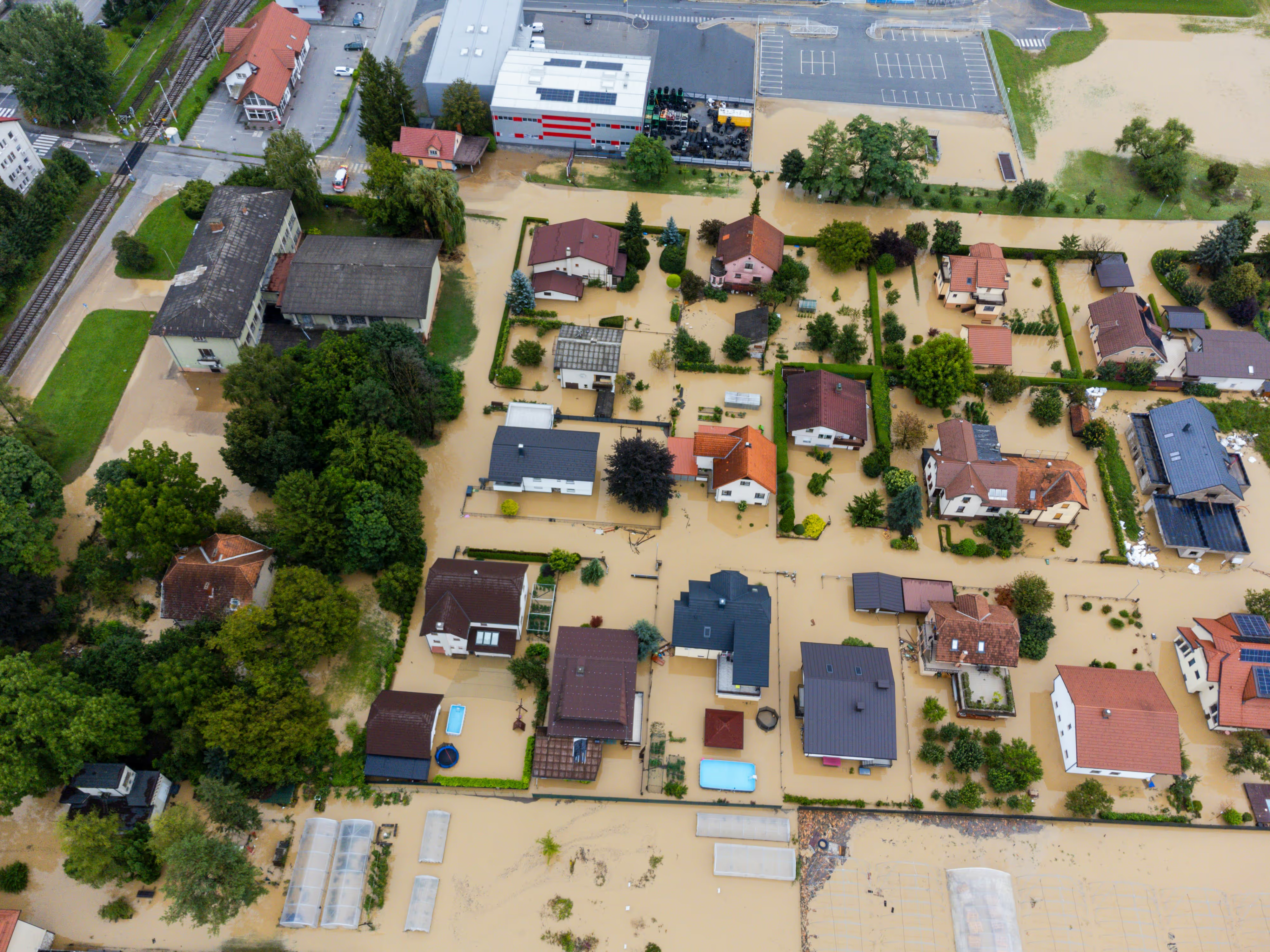Background
In January 2025, Los Angeles County experienced one of its most severe natural disasters in recent memory—a combination of destructive wildfires and hurricane-force Santa Ana winds. Entire neighborhoods were damaged or destroyed, displacing residents and shuttering small businesses. As workers lost income and storefronts closed, regional government leaders had to act fast to support those most affected.
With limited federal relief available, the LA County Department of Economic Opportunity (DEO) and the LA City Economic and Workforce Development Department (EWDD) partnered with AidKit to quickly establish a targeted disaster relief system. Together, they launched two programs within weeks: one offering $2,000 cash assistance to financially impacted workers and another providing $2,000 to $25,000 grants to small businesses with verified damages inside the fire zones. This rapid, tech-enabled response prioritized both speed and equity in a time of crisis.
[[cta_component]]
Partnership Wins:
1. A system to apply for relief deployed in under two weeks
AidKit worked closely with regional authorities to build and launch an application system on an accelerated timeline, enabling intake and eligibility screening soon after funding was approved. AidKit recognized that, in this time of crisis, LA’s DEO and EWDD needed an adaptable partner to help serve a range of target populations as the relief fund evolved.
The system was designed to scale alongside the program, accommodating new eligibility tiers, documentation types, and outreach strategies as community needs and funding grew.
From the start, the agencies and AidKit were able to track, in real time, how many applicants were eligible and where they landed on the map—providing clear visibility into the scale of need as applications came in.
2. Map dashboards streamlined verification and targeted outreach
Application data was used to identify high-need zones where eligible residents hadn’t applied—helping DEO and community organizations focus outreach efforts and close gaps. The mapped data was integrated into the eligibility review process, enabling faster verification and helping prioritize applicants located within eligible zones.
“We can see that underlying Cal Fire data where there should be applications. It’s been helping us do really targeted outreach.”
—Kelly LoBianco, Director, LA County DEO
3. Mapping helped unlock additional funding
Custom-built geospatial dashboards allowed regional authorities to overlay applicant data with fire evacuation zones, damage severity tiers, and Cal Fire perimeters—all in one system.
By combining this data with its confidential ArcGIS, DEO was able to facilitate data-driven conversations with funders and community organizations and accurately estimate needs to secure additional funding—expanding the relief pool from $2M to over $20M.
4. Identity verification enhanced by AI and supported by human review
LA officials used AidKit’s identity verification tools to confirm applicant identity through document and biometric checks without relying on knowledge-based questions. The approach was informed by NIST Identity Assurance Level (IAL) guidelines—a federal standard for balancing identity security and accessibility in public programs. This enabled fast, secure verification even for applicants without traditional IDs or those who lost documentation in the fires.
The system also incorporated in-person attestation through trusted community partners, enabling people whose documentation was lost in the fires to verify their identity face-to-face, further expanding access while maintaining program integrity. The AI-enhanced identity review process always included human reviewers to ensure applicants were treated fairly and transparently.
5. Effective fraud prevention without sacrificing accessibility
Fraud risk is a known challenge in emergency relief programs, where urgency and high applicant volume can create vulnerabilities. LA regional authorities and AidKit anticipated this risk and implemented layered safeguards to protect program integrity. AidKit’s fraud prevention approach combined AI-enhanced identity verification, geospatial data analysis, and human review—allowing the team to detect and prevent a significant volume of ineligible and fraudulent applications.
6.Grant amounts aligned to verified damages
AidKit’s system incorporated damage severity data directly from inspectors, enabling LA’s DEO and EWDD to offer tiered grants based on verified impact. Using applicant data combined with public data, DEO was able to visualize information in real time, supporting both applicant verification and strategic decision-making.
“We know who completely lost their brick-and-mortar business. We know who lost their job because they worked in a residence that burned down… We have a lot of really dynamic data that not only will help us get grants to those that need the most but will also help us better understand the true economic impact of this crisis… to design recovery solutions for the communities.”
—Kelly LoBianco, Director, LA County DEO
7.Simple, accessible application experience
The platform was designed with plain language content, responsive design, and multilingual support—ensuring accessibility even for applicants navigating trauma.
“You need a clean and simple application that people can understand, that’s written at a level that people, especially in crisis, can go through simply, and you need really robust outreach and technical assistance.”
—Kelly LoBianco, Director, LA County DEO

Impact Highlights
- Application system launched in under 2 weeks
- $2,000 cash assistance for financially impacted workers
- $2,000 to $25,000 grants for small businesses based on verified damages inside fire zones
- Real-time application and public data helped DEO estimate needs on the ground and raise over $20M in funding
- Application data helped DEO demonstrate widespread, significant need by mapping data in ArcGIS to secure additional funding to fund all eligible applicants
- In-person identity verification available for applicants who lost documentation
- Fraud detection protocols successfully identified and stopped ineligible and fraudulent applications
Technology in Action
AidKit’s platform brought together geospatial mapping, AI-enhanced identity verification, and real-time review tools to power the LA region’s disaster relief system. The interactive map dashboards gave the DEO visibility into:
- Fire impact zones and evacuation orders
- Severity-based applicant tiers
- Gaps in outreach based on Cal Fire overlays
- Verified applicant locations linked to business losses or home damage
- Inspector-submitted data tied directly to grant decisions
This real-time intelligence was especially helpful for LA’s DEO and EWDD in understanding program gaps, scaling the fund, and ensuring resources reached the communities most affected—all while maintaining a strong fraud prevention posture.
The Bigger Picture
LA’s regional wildfire relief effort demonstrated how modern infrastructure and cross-sector partnership can turn a highstakes emergency into an opportunity to strengthen public service delivery.
“Los Angeles is a vast, diverse, and vibrant community, and the damage from the January 2025 windstorms and wildfires was heartbreaking. The launch of the LA Region Small Business and Worker Relief Funds was made possible through collaboration among the City, County, AidKit, philanthropy, private partners, and community organizations—reflecting the kind of collective commitment needed to deliver compassionate, equitable support to those most impacted.”
—Stephanie Holloway, Head, Intergovernmental Relations & Development, LA County DEO
The approach was replicable, equitable, and scalable, laying the groundwork for future rapid-response efforts that do not sacrifice accountability or accessibility. It also showed that it is possible to move quickly while protecting public dollars through proactive, technology-enabled fraud prevention strategies that maintain program integrity.
Looking Ahead
Now, LA County is working to formalize this kind of permanent response infrastructure so future programs can launch even faster.
“I think we did a great job of finding AidKit, bringing them on board, getting contracts done, but there is a lag in doing that. You have some of that in place in advance, then you’re just focusing on the audience and the application and fundraising, not the operational mechanics.”
—Kelly LoBianco, Director, LA County DEO
By investing in flexible infrastructure and community-informed design, LA’s DEO and EWDD and AidKit are showing what is possible when governments prioritize both speed and dignity.

%20(1).avif)






